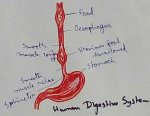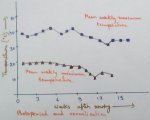Worksheet on Structure of a Flower
Worksheet on structure of a flower contains various types of questions.
Remember the important information to the answer the questions given below.
Pedicel: Small stick-like structure that holds the flower on the stem.
Thalamus: A disc-like structure situated at the top of the pedicel and holds all the parts of a flower.
Calyx: Outermost cup-shaped green structure on a thalamus.
Sepals: Small leafy units of calyx.
Corolla: The second inner whorl of white or colored leafy structures placed just next to calyx.
Petals: White or colored leafy parts of a
corolla.
Stamen: Male reproductive organ of a flower.
Filament: Fine thread-like portion of a stamen, which holds the anther.
Anther: The pollen case situated at the top of a filament.
Pollen grains: Fine granular cells in which develops the male gametes.
Carpel: Unit of gynoecium; the female reproductive organ of a flower.
Androecium: The third inner whorl of a flower, composed of male reproductive organs.
Gynoecium: The inner most whorl of a flower composed of female reproductive organs.
Ovary: The swollen base of a carpel, that holds one or more ovules within it.
Style: Long tubular structure emerging from the top of the ovary.
Stigma: Broader apex of the style, which catches the pollen grains during pollination.
I. Match the column:
|
Column - A (i) Lamina
(ii) Anther (iii) Carpel (iv) Sepal (v) Corolla (vi) Style |
Column - B (a) Stamen
(b) Calyx (c) Petal (d) Leaf (e) Stigma (f) Ovary |
II. Fill in the blanks:
(a) In a female flower we see calyx, corolla and ________.
(b) A stamen has two parts, ________ and filament.
(c) Pollen grains are stored in ________ of a stamen.
(d) The stalk of a flower is called ________.
(e) Ovule of a matured ovary is transformed into ________ of a fruit.
(f) ________ of a flower attracts insects for pollination?
III. Answer the following questions:
1. Which part of a plant does get modified into flower?
2. Name different parts of a complete flower.
3. Write the name of two complete flowers.
4. Name two plants in which male and female flowers are seen separately.
5. Which part of a flower does protect its reproductive organs within a bud?
6. Name the male reproductive organ of a flower.
7. Which part of a flower is treated as the female reproductive organ of a flower?
8. In which part of a flower are the pollen grains stored?
9. Which part of a flower is transformed into fruit?
10. Which parts of a flower are transformed into seeds?
From Worksheet on Structure of a Flower to HOME PAGE
Recent Articles
-
Eleventh Grade | Eleventh Grade Science | Eleventh Grade Math
Jun 27, 25 12:26 AM
Eleventh grade biology has been designed in accordance with the recommended topics. We will cover all the topics in biology very exciting and interesting way. -
Explain Digestion of Food | Salivary Glands | Oesophagus | Stomach
Jun 27, 25 12:20 AM
Before the digestion is start by the different enzymes secreted from the different digestive glands food must be turned and chut or mixed with saliva inside the mouth. -
Explain Human Digestive System | Mouth | Tongue | Pharynx | Teeth
Jun 21, 25 01:15 PM
Digestive system is a system of alimentary canal and digestive glands. Alimentary canal- alimentary canal is a tube of variable diameter having muscular wall and glandular epithelial tissues which sta… -
Vernalisation in Plants | Definition | Mechanism | Devernalization |
Jun 18, 25 01:34 PM
Definition of vernalisation- The change of flowering habit due to the low temperature treatment is known as vernalisation. This is a physiological process which was denoted by Clipart in 1857 invite b… -
The Food We Eat | Food we Get from Plants and Animals | Carbohydrates
Jun 15, 25 03:20 PM
What are the food that we should eat? Find out the names of ten food items in the word maze. Write the names in the correct column of the table given below. Food we get from plants Food we get from an…




New! Comments
Have your say about what you just read! Leave me a comment in the box below.